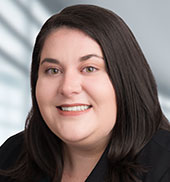Last month, a district court judge in California dismissed a highly publicized lawsuit in which the plaintiff claimed that Starbucks’ iced beverages contained too much ice and not enough coffee. The suit was the subject of derision in the media and general public, and even the district court seemed incredulous that someone could not know that including ice in a beverage decreases the amount of the beverage that will be included in the cup. But the lawsuit still serves to highlight the growing trend of cases claiming that allegedly deceptive product packaging can cause consumers to believe they are receiving more food or drink than what they are actually receiving.
One particular category of this type of lawsuit is so-called “slack-fill” cases. The essence of these claims — many of which purport to assert claims on behalf of nationwide classes — is that product packaging contains too much empty space, or slack-fill.
Within the last several months, slack-fill lawsuits have been brought against the makers of Barilla pasta products and the makers of Sour Patch Watermelon candy. Other recent cases include, among others, lawsuits against the makers of M&M’s Minis, Nabisco Go-Paks, Rice-A-Roni and Pasta Roni, and McCormick pepper. Although plaintiffs have so far only resolved a few of these cases successfully, the uptick in the litigation shows no signs of abating.
The plaintiffs in these types of cases typically rely on federal law that prohibits the use of “nonfunctional” slack-fill. According to the FDA, slack-fill is nonfunctional, and thus prohibited, unless it (1) is required for the protection of the contents of the package, (2) is needed for the operation of manufacturing machinery, (3) results from unavoidable product setting, (4) is necessary for the preparation or consumption of the product, (5) results from packaging that contains a reusable container (like gift products), or (6) is needed to meet mandatory labeling requirements. California has a similar statutory prohibition against the use of nonfunctional slack-fill.
Companies seeking to avoid the risk of slack-fill litigation should evaluate whether their packaging of food, drinks, and other products meets the federal standard. The easiest way to eliminate potential liability, of course, is to reduce package sizes and thus eliminate any slack-fill or empty space in product packaging. When that is not possible, companies should ensure that the empty space meets one of the six exceptions described above. Particular care should be given this type of evaluation when a company has reduced the amount of food or drink in a package without changing the package size — a change that can leave a company open to claims of misrepresentation or deception.
Along these same lines, companies can seek to limit their exposure by taking steps to ensure that their product packaging is not seen as deceptive. One easy way to do so is by making packaging transparent, which helps to prevent consumers from claiming that they did not how much of a product they were receiving. Another potential safeguard is to provide clear and conspicuous disclosures about the need for empty space in product packaging — much like the ubiquitous disclosures about product settling on cereal boxes and similar products. Finally, internal records are also important for defending against potential lawsuits — if, for example, a company’s product packaging requires slack-fill for the manufacturing and packaging process, then a company should maintain clear and accessible records demonstrating that need.



